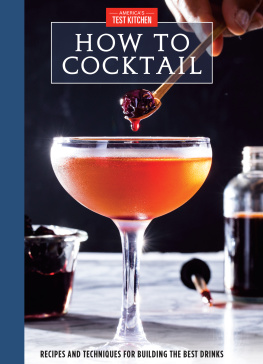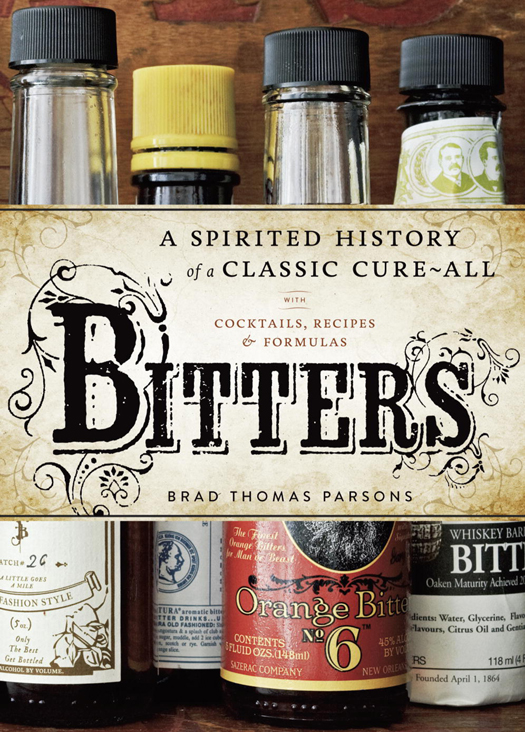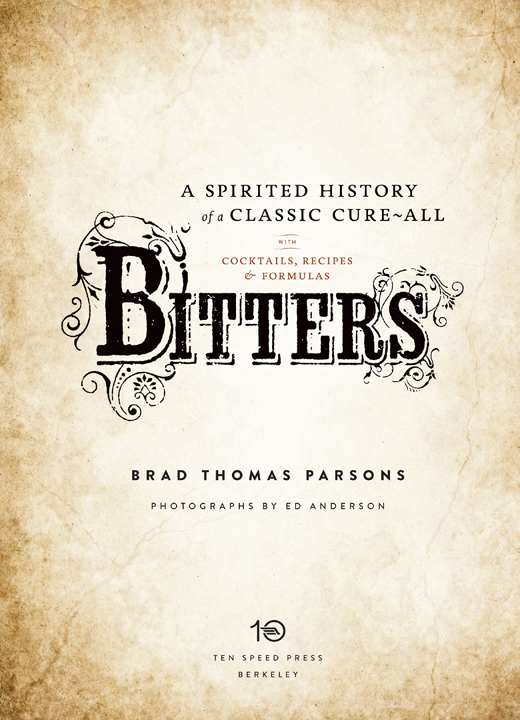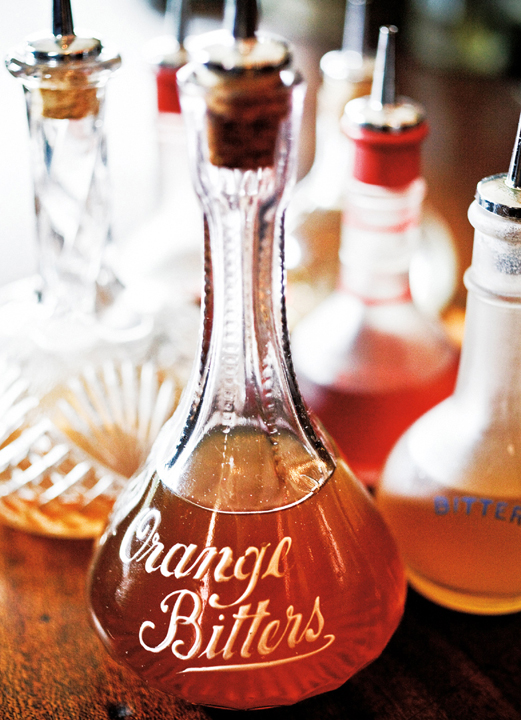
Some of the recipes in this book include raw eggs. When eggs are consumed raw, there is always the risk that bacteria, which is killed by proper cooking, may be present. For this reason, always buy certified salmonella-free eggs from a reliable grocer, storing them in the refrigerator until they are served. Because of the health risks associated with the consumption of bacteria that can be present in raw eggs, they should not be consumed by infants, small children, pregnant women, the elderly, or any persons who may be immunocompromised. The author and publisher expressly disclaim responsibility for any adverse effects that may result from the use or application of the recipes and information contained in this book.
Copyright 2011 by Brad Thomas Parsons
Photographs copyright 2011 by Ed Anderson
All rights reserved.
Published in the United States by Ten Speed Press, an imprint of the Crown Publishing Group, a division of Random House, Inc., New York.
www.crownpublishing.com
www.tenspeed.com
Ten Speed Press and the Ten Speed Press colophon are registered trademarks of
Random House, Inc.
Library of Congress Cataloging-in-Publication Data
Parsons, Brad Thomas.
Bitters : a spirited history of a classic cure-all, with cocktails,
recipes, and formulas / Brad Thomas Parsons.
p. cm.
1. Cocktails. 2. Bitters. 3. Cookbooks. I. Title.
TX951.P355 2011
641.874--dc23
2011017774
eISBN: 978-1-60774-072-8
v3.1
If you took the SAT exams back in the twentieth century, you may recall the curious puzzle Salt is to food, as bitters are to [blank]. What scholar had the bright idea that high school juniors knew how to mix a proper old-fashioned anyway?
KURT B. REIGHLEY, UNITED STATES OF AMERICANA
So drunk in the August sun, and youre the kind of girl I like
PAVEMENT, GOLD SOUNDZ
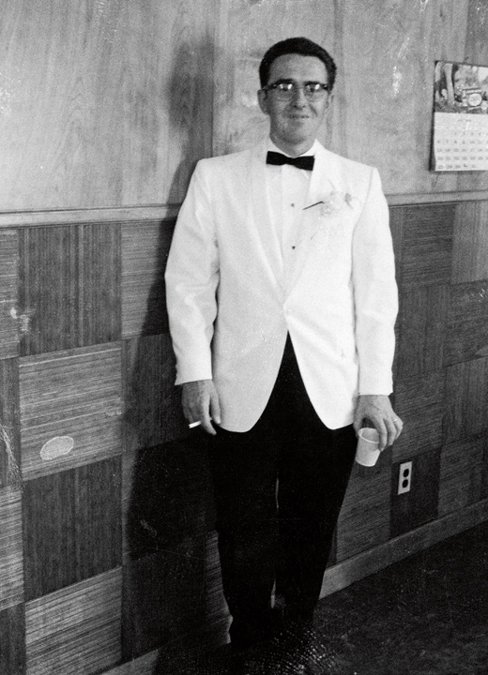
To Herbert James Parsons (19372008)
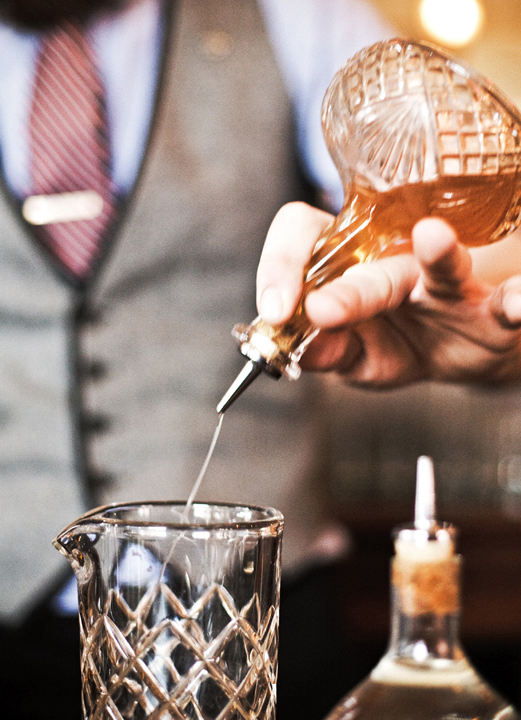

INTRODUCTION
Cocktail culture has come a long way since I last worked behind the bar, which was in the early 1990s at Harpoon Eddies in Sylvan Beach, New York, a town optimistically billed as the Coney Island of Central New York. During college summer vacations I spent most of my shifts whipping up rum runners and strawberry daiquiris (by pressing a button on a constantly whirring machine that was eerily similar to the Slurpee station at a 7-Eleven), pulling endless pitchers of beer, and mixing innumerable Cape Codders. Our sour mix came out of a sticky soda gun, there was no such thing as simple syrup, and citrus juices were delivered to us in oversized cans from Sysco. I do remember a rarely reached-for bottle of Angostura bitters, with its distinctive yellow cap and oversized label, which was tucked away behind the house copy of Mr. Boston: Official Bartenders Guide. The only time I reached for the bitters was when Maurie, one of our regulars, ordered the occasional Manhattan, which I served in one of the four cocktail glasses we kept hanging on the rack (most of the beach-bound drinks were served in plastic cups). Granted, slinging drinks during your college years at a popular beach bar has its allure: 25-cent hot wing Wednesdays, beach volleyball tournaments, a prime seat for Fourth of July fireworks, plenty of bikinis, and decent tips. I try to make it back to Harpoon Eddies at least once a summer when Im back home, and I have a sneaking suspicion that the same bottle of bitters might still be behind the bar.
Most college students will drink whatever they can get their hands onoften to disastrous results (think grain alcohol holiday punch served from a Hefty baglined trash bin, spiked with peppermint schnapps and stained red from the box of candy canes the host dumped in as a garnish). In those days, my experience with what is now considered speakeasy chic was limited to the evenings when I would swing by the bar at the local members-only American Legion to ask my dad a favor (usually to borrow the car or twenty dollars; sometimes both). There the bartender would peer through the mirrored glass window to see who was at the door and buzz you in.
After several semesters of these ill-advised punches, fake IDs, and an excess of drinks that will never touch my lips again (Im talking to you, Kahla and creamand to any other cream-based drink that was pressed into my hands), it took me a long time to come to appreciate and understand the balance required of a proper cocktail. After college I cut my teeth on vodka martinis and vodka gimlets, but eventually I embraced brown spirits, especially bourbon and rye, and then, as a fully formed adult, I moved onto the pleasures of aperitifs and digestifs flavored with bitters, herbs, and botanicals.
* * * *
Aromatic cocktail bittersthe kind you dont sip but add in dashes to enliven a drinkwere an essential ingredient in classic cocktails, and are now back and bigger than ever. Just as restaurant menus herald the local farmer who grew the heirloom carrots featured in that nights special, cocktail menus increasingly single out house-made bitters and those made by artisanal producers. And indeed, seeking out the best bitters can become as much of an obsession as finding the freshest locally sourced ingredients. The same DIY ethos that made growing tomatoes on your apartments rooftop, making your own seasonal preserves, curing charcuterie on your fire escape, and all sorts of other hands-on kitchen projects so popular over the past five or so years has rolled out to bars. Today listing house-made bitters on the menu and displaying dozens of homemade tinctures is a benchmark for most serious bar programs. Once Ive sized up a joint, Ill ask the bartender, Do you make your own bitters? More often than not the answer is yes: orange, grapefruit, coffee, barley, cherry-vanilla, plum, rhubarb, rosemary, and lavender, to name just a few.
Asking that simple question makes me feel connected to an ongoing conversation about the history of the American cocktail. And its not just because the bartender is decked out in his nineteenth-century best and most likely sporting a Civil Warera beard or artfully waxed mustache. Its because that simple old-fashionedthe one made with rye, simple syrup, bitters, and a lemon twistis practically what you would be holding in your hand if you walked into a bar in the late 1800s and Jerry Thomas served you himself.
* * * *
In 2009 I wrote a short piece on homemade bitters for Seattle Met magazine. I quickly geeked out on the topic, and sharing my enthusiasm with so many bartenders who were also on the bitters trail only increased my obsession. At the bar Spur in Seattle, where David Nelson was bartending when I wrote the piece (bartenders, like ballplayers, move around to other teams all the time), there were nearly two dozen squat glass bottles lining the bar, each filled with one of Nelsons homemade bitters and tinctures. When David said, You know, it would be pretty ingenious if someone wrote a book on bitters, his words stuck with me, and I shared Davids sentiment with my friend A. J. Rathbun, who writes a new cocktail book nearly every year. He smiled and said, Dont look at me. Thats all you, my friend. That night I revisited my dog-eared copy of




